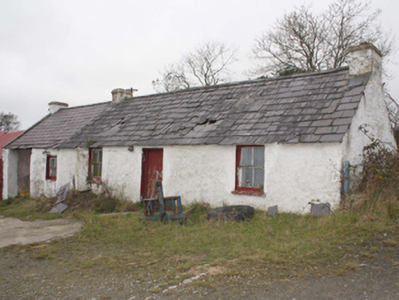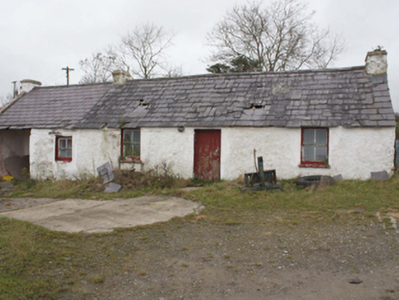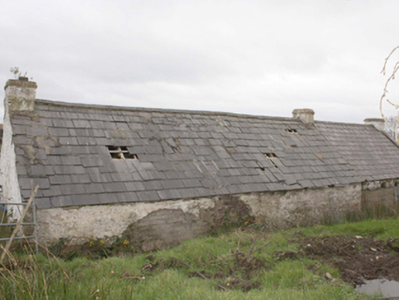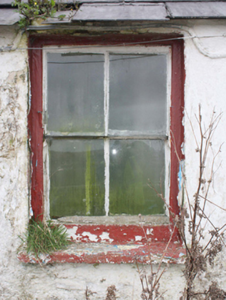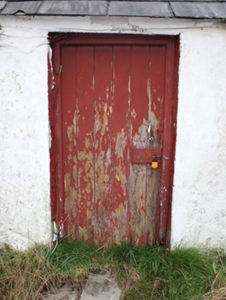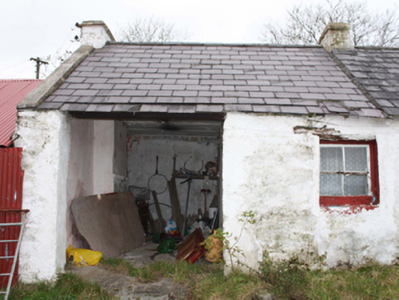Survey Data
Reg No
40901903
Rating
Regional
Categories of Special Interest
Architectural
Original Use
House
Date
1840 - 1880
Coordinates
233743, 435502
Date Recorded
22/11/2008
Date Updated
--/--/--
Description
Detached three-bay single-storey vernacular house, built c. 1860, with two-bay outbuilding extension to west gable. Pitched natural slate roof with clayware ridge tiles, and smooth rendered gable ended chimneystacks with rendered coping. Roughcast rendered and whitewashed rubble stone walls. Square-headed window openings with two-over-two horned timber sliding sash windows, and with rendered sills. Square-headed door opening with battened timber door. Set within farmyard, attached to single-story outbuildings in a courtyard to the front and west of house, with pitched corrugated-metal roofs, roughcast rendered walls, square-headed openings and corrugated metal doors. Set up lane from road with L-shaped courtyard of outbuildings to front.
Appraisal
Although no longer in use as a dwelling, this relatively intact example of a vernacular house retains its early form and character, and is an appealing feature in the scenic rural landscape to the north of Buncrana. Its integrity is enhanced by the retention of much of its salient fabric including timber sliding sash windows, battened timber door and natural slate roof. Modest in architectural ambition it exhibits the simple and functional form of vernacular building in Ireland. The largely blank rear elevation is a typical feature of many small-scale vernacular dwellings in rural Ireland. The form of this building and location of the chimneystacks suggests that this building is of the ‘direct entry’ type that is characteristic of the vernacular tradition in north-west Ireland. The building has been extended along its length at some stage by the addition of an open outbuilding, a feature of many vernacular houses in Donegal. Sensitively restored, this building would make a strongly positive contribution to its pleasant rural location, and would be an integral element of the built heritage of the local area.

